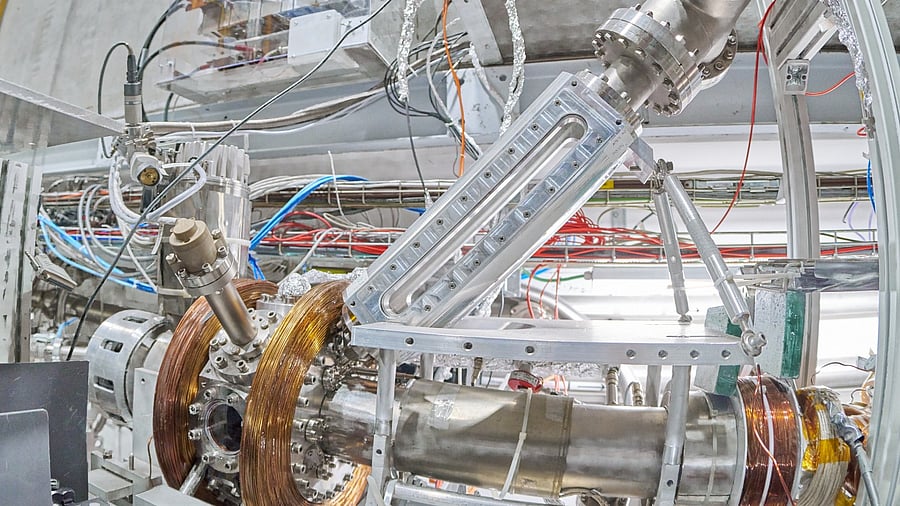
The set-up used by the AEgIS team to laser-cool positronium.
Credit: CERN Website
Bengaluru: An international collaboration of researchers has, for the first time, successfully demonstrated the laser cooling of Positronium.
The demonstration follows a series of complex experiments conducted by the Antihydrogen Experiment: Gravity, Interferometry, Spectroscopy (AegIS) collaboration, comprising physicists from 19 European groups and one Indian group, at the European Organisation for Nuclear Research (CERN).
With the breakthrough, the team has opened up possibilities of deeper studies on antimatter, or substances with subatomic particles that have electrical properties opposite to those of particles in ordinary matter. The laser-cooling of anti-atoms and their spectroscopic comparison are also critical tests for Quantum Electro Dynamics.
In antimatter, electrons and protons have their corresponding antiparticles called positrons and antiprotons. Positronium is unique as it is a purely leptonic atom, or an atom that is entirely made up of electrons and their antimatter counterparts, positrons.
The paper – Positronium laser cooling via the 13S–23P transition with a broadband laser pulse – was recently published in Physical Review Letters, where the AEgIS team described the laser-cooling of Positronium atoms achieved from ~380 Kelvin (106.85 degrees Celsius) to ~170 Kelvin (minus 103.15 degrees Celsius), using a 70-nanosecond pulsed alexandrite-based laser system.
India's contribution
The team, over the past several years, performed multiple experimental runs at the CERN accelerator hall. Sadiq Rangwala, Professor, Light and Matter Group at the Raman Research Institute (RRI), leads the Indian effort in the AEgIS collaboration with key contributions in the design of diagnostics for the laser beam alignment deployed at the CERN accelerator.
The lasers were either deep in the ultraviolet or in the infrared frequency bands, making the overall laser alignment design very challenging, Prof Rangwala said.
“The experiment was done under the very challenging circumstances of an accelerator beam hall, rather than within the confines of a very well-controlled laboratory. Every part of the experiment – be it the input beams, the lasers, laser alignment, timing and control systems, or detection techniques – required technological innovations to make the science a reality,” said Professor Rangwala, one of the co-authors of the paper.
CERN research groups from Austria, Czechia, Italy, Latvia, Norway, Poland, and the UK are part of the AEgIS collaboration.